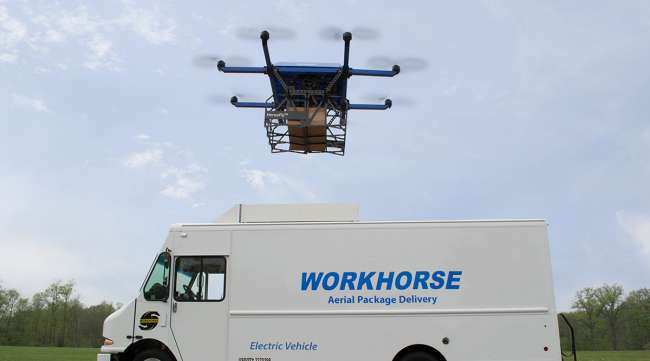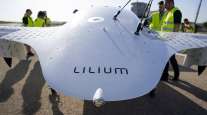Las Vegas Sun
Drones That Would Augment Truck Delivery Get Test Run in Las Vegas

Drones could be routinely dropping packages out of the air as early as this December, just in time for the busy holiday season, if one company that demonstrated its technology recently in Las Vegas has its way.
Rather than taking off from a distribution center, the drone, dubbed HorseFly, would be docked on a truck and used to deliver packages along the truck’s route. Workhorse, an Ohio-based company, created the drone and an electric delivery truck that UPS uses.
UPS ranks No. 1 on the Transport Topics Top 100 list of the largest North American for-hire carriers.
The drone would take off, drop the package at its designated location and fly back to the truck continuing its route. The technological advance saves the driver time and fuel.
Every mile saved counts.
“If drivers cut out one mile of driving a day that would add up to $54 million in fuel savings for the year,” said Mike Dektas, Workhorse spokesman. “Obviously for rural deliveries, it could be more than a mile.”
Software on the truck evaluates each package and designs the most efficient way to reach every destination on the route — whether it’s drone-delivered or driver-delivered, said Elliot Bokeno, a Workhorse engineer after a drone demo at Pack Expo in Las Vegas last month.
“It divides those packages between packages that the drone can do … and packages the drone can’t do because they’re too big, too heavy or too awkward,” he said.
The service would be best used in rural areas that have more distances between package drops-off, Bokeno said.
“The one the drone is doing means you don’t have to drive that extra mile to deliver that single package,” he said. “It’s what’s the least amount of miles a driver can do per day, given the packages that we have.”
Workhorse and UPS carried out a residential package delivery by an autonomous drone earlier this year. UPS also uses WorkHorse’s battery-electric delivery trucks in various areas, which led to the two companies linking up for the drone project.
The FAA’s Small Unmanned Aircraft Regulations, or Part 107, states that a drone operator must keep their drone within sight, which is a roadblock for this operation as it stands.
With the goal of implementing this technology by year’s end, Workhorse has to first get approval by the FAA to allow their aircraft to fly farther than the eye can see.
“We have a petitioned the FAA, saying let us do more beyond line-of-sight — or virtual line-of-site, as we have video coming from the drone — delivery in rural Ohio and collect all that data. (We would) then bring it back to (the FAA) as a demonstration of what drone delivery is going to look like if these rules are relaxed,” Bokeno said.
Distributed by Tribune Content Agency, LLC




